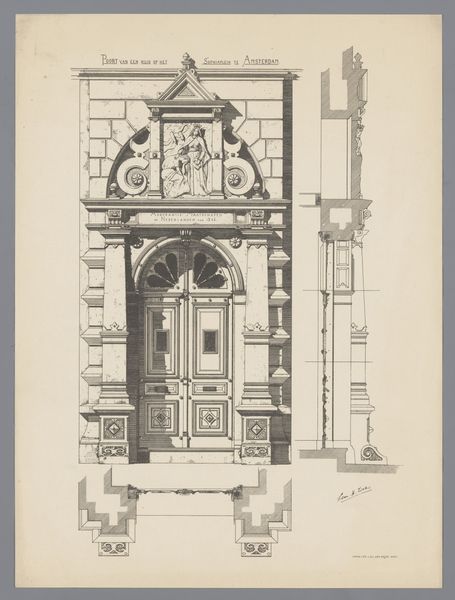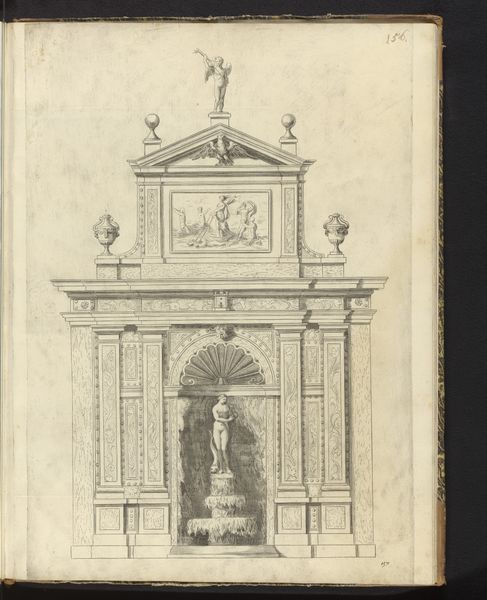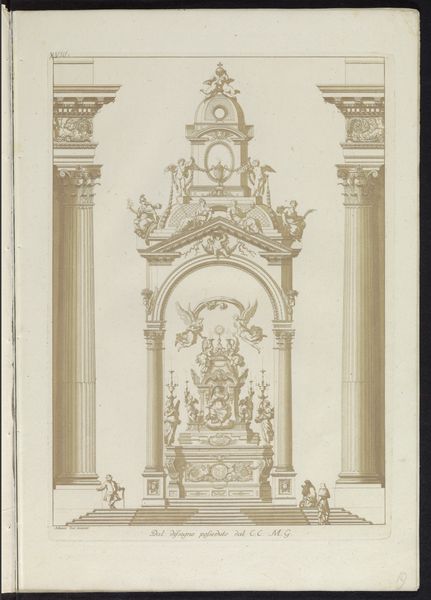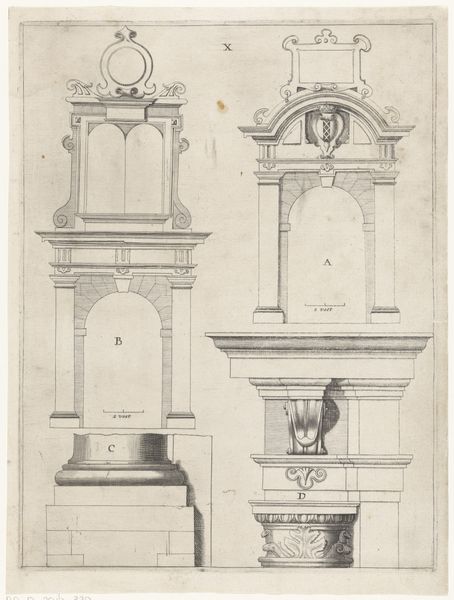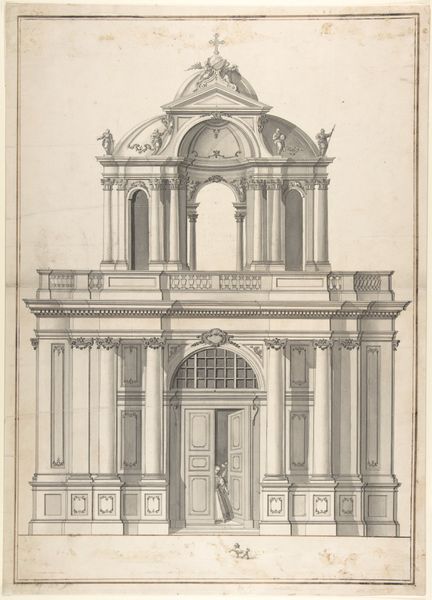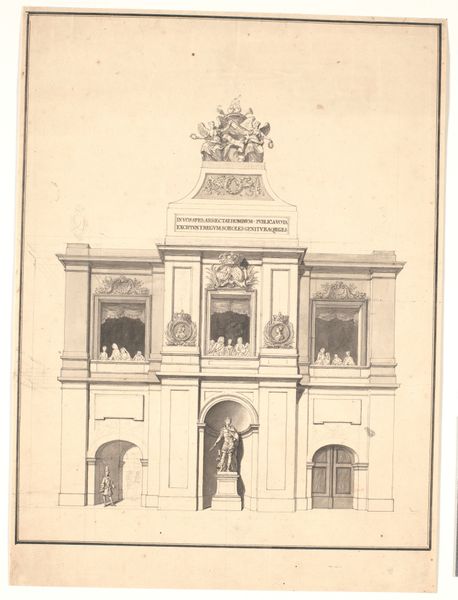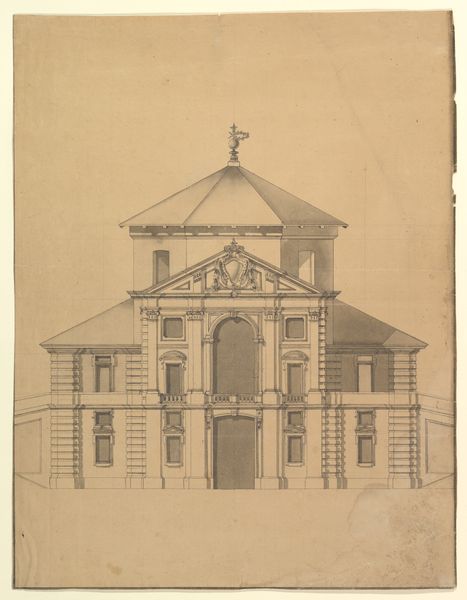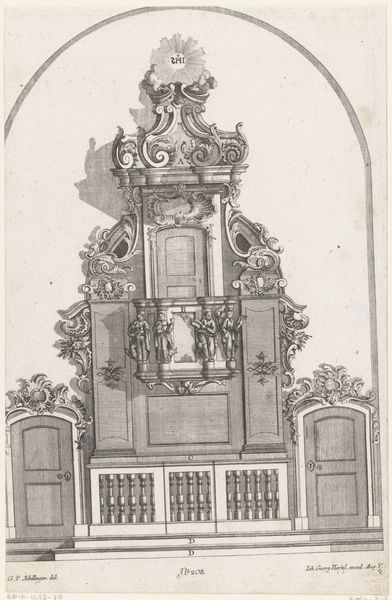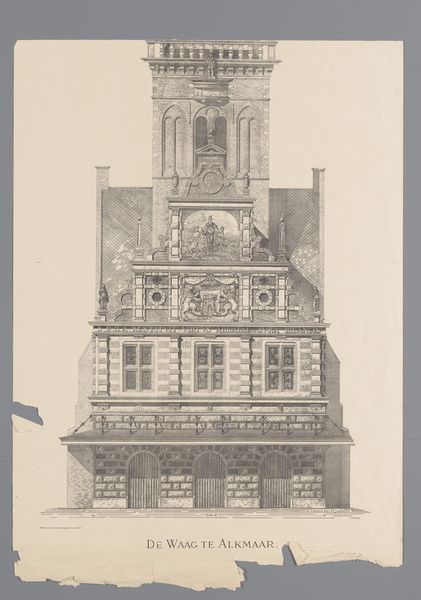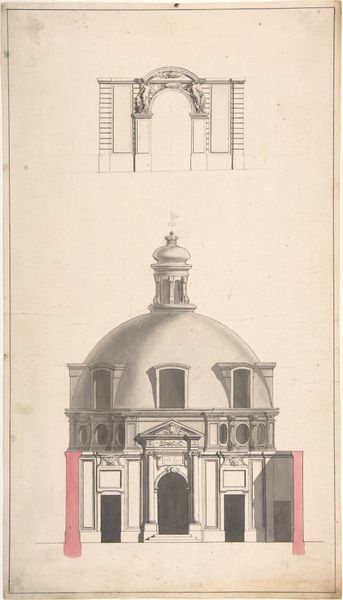
Elevation of the Pompe de la Samaritaine, Paris 1708 - 1719
0:00
0:00
Dimensions: 18 3/4 x 15 1/2 in. (47.7 x 39.4 cm)
Copyright: Public Domain
Editor: So, this is Robert de Cotte’s "Elevation of the Pompe de la Samaritaine, Paris," created between 1708 and 1719. It's a pencil drawing and print on paper. It’s fascinating to see this very precise, almost technical rendering, yet it's still a beautiful work of art. What draws your attention when you look at it? Curator: Well, I see more than just an architectural drawing; I see a carefully constructed statement about power and civic identity in early 18th century Paris. Consider the location: the Samaritaine pump house, vital to the city's water supply, became a visual symbol, an instantly recognisable, government project. De Cotte, as a leading architect, was instrumental in shaping this imagery. Editor: So it’s about more than just pretty architecture; it’s about making a statement. Curator: Precisely! The neo-classical style, with its emphasis on order and proportion, was chosen deliberately. It visually linked Louis XIV’s regime to the grandeur of antiquity, reinforcing the idea of stability and enduring authority. What impact did this aesthetic program have? And who was it speaking to? Editor: I suppose the intended audience was anyone who saw it, Parisians going about their day. Curator: And beyond. Consider how prints like these circulated among the aristocracy and even further abroad. These architectural representations played a significant role in disseminating French taste and promoting France’s cultural dominance. De Cotte wasn’t just designing a building; he was crafting an image of French prestige. How do you see the fountains fit into that ambition? Editor: I hadn’t considered it that way. I guess it's a powerful symbol of control, not just of resources, but of public perception. Curator: Indeed. It demonstrates how art, architecture, and politics were intertwined. Looking at the 'Pompe de la Samaritaine', we see not only a beautiful drawing, but also the visual language of power in early modern France. Editor: I’m leaving with a whole new understanding of how political intent could shape something as simple as a building’s design!
Comments
No comments
Be the first to comment and join the conversation on the ultimate creative platform.
